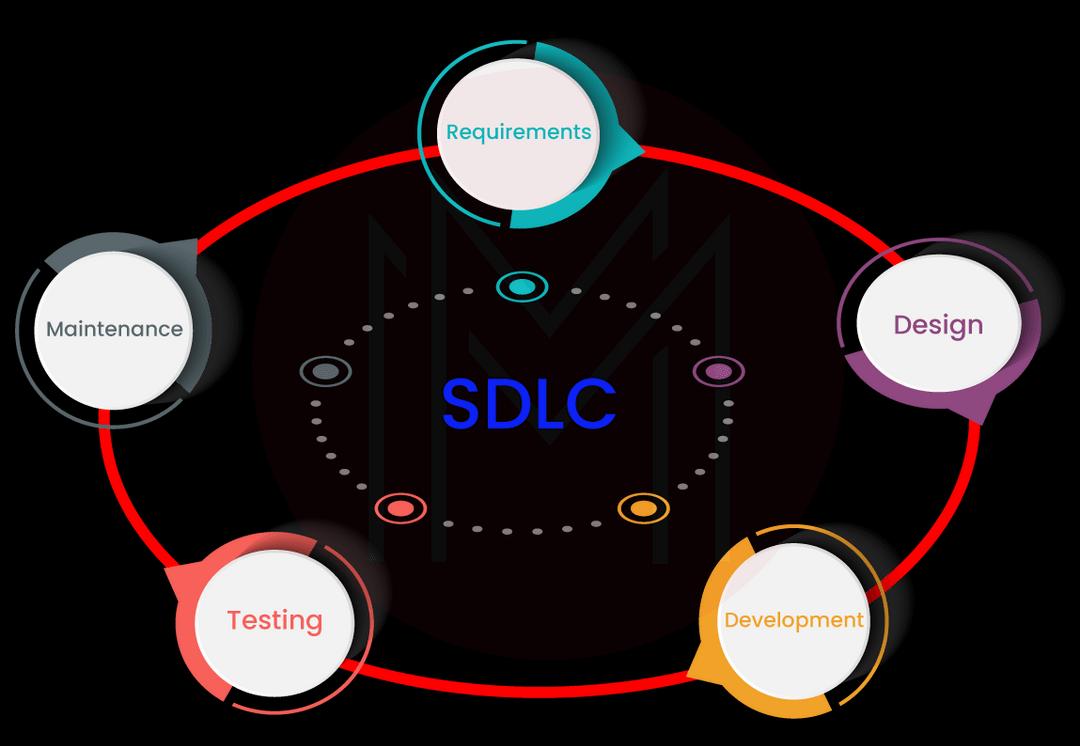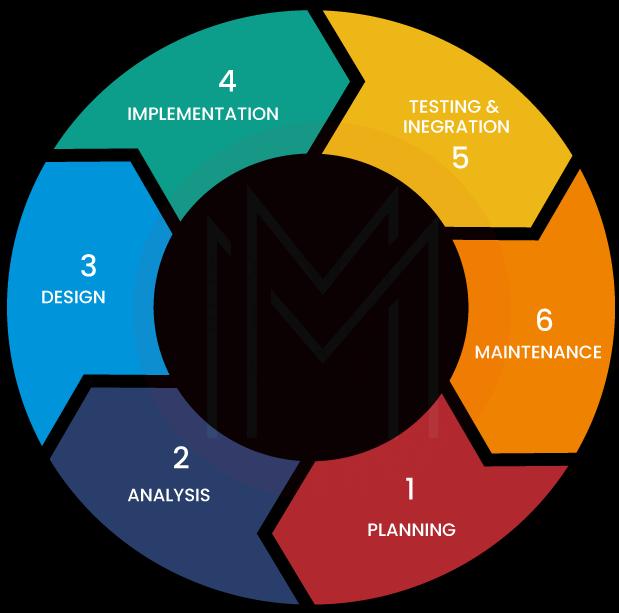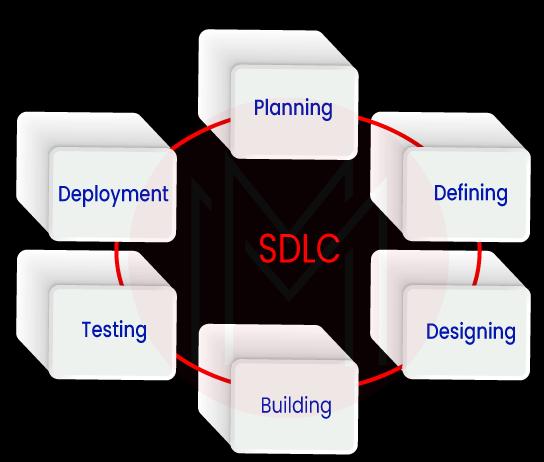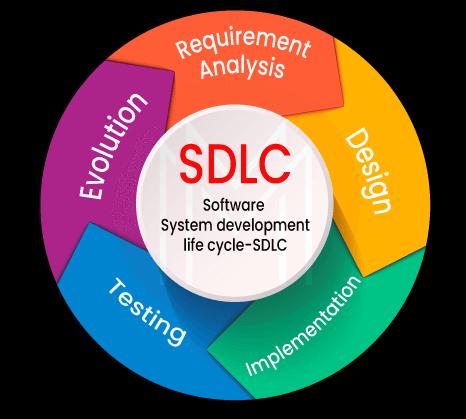- Guide for Installing JIRA Applications on Windows
- Top 5 JIRA Dashboard Gadgets
- JIRA Interview Questions
- Jira Kanban Boards
- JIRA Tutorial - Complete Guide
- JIRA Version History
- JIRA Vs TFS
- Jira vs Trello: Agile Project Management Tools Comparison
- Tosca Jira Integration
- JIRA vs Bugzilla
- ALM Octane Tutorial - A Complete Beginners Guide
- How to Install JIRA on Windows
- JIRA Projects
The Software Development Life Cycle (SDLC) is a full-proof method that helps create qualitative, low-cost software in less time. It is a well-structured flow of stages that allows a company to develop high-quality software that has been tested thoroughly and is ready for production.

If you’re thinking of getting employment in this field, this article is just for you. Below, you can find some of the best and updated SDLC interview questions for beginners and professionals to prepare for the upcoming interview effortlessly.
Our team curated XML Interview Questions as follows:
Frequently Asked SDLC Interview Questions
- Define SDLC
- Explain all of the phases in a typical SDLC process.
- How is the design phase important?
- What do you know about a feasibility study?
- Define SRS.
- Explain the use of the JAD session.
- What are some of the best SDLC tools?
- How DDLC and SDLC work together?
SDLC Interview Questions for Beginners
If you’re just starting out, this set of SDLC interview questions will definitely match your requirements.
1. Define SDLC.
SDLC is abbreviated for Software Development Life Cycle. It is a series of steps that provides a well-defined model to develop and manage the lifecycle of low-cost, high-quality software in the shortest possible time. The objective of SDLC is to create subpar software that exceeds the customer demands and expectations.

A detailed SDLC plan comprises stages or phases that have their own processes and deliverables. Also, it describes everything thoroughly, including planning, development, testing and distribution of a product.
2. Define the importance of the SDLC process.
Here are some of the points that describe the importance of the SDLC process:
- Explains the necessity of project planning, scheduling and budgeting
- Allows some control on the development project to guarantee the final product meets the original criteria
- Provides a comprehensive structure for a standard set of projects and deliveries
- Helps in the process’s growth by improving the visibility of project planning
- Assures well-management of design and testing processes
- Effectively helps in project management and tracking
- Aids in the development acceleration and improves the client relationships
- Helps in decreasing the project risk and overhead costs

| Get skilled and begin your career as a software quality assurance engineer by taking Jira Certification Training. |
3. Explain all of the phases in a typical SDLC process.
In a typical SDLC process, phases include:
Planning
This is the first stage of the process that is about determining the needs of the clients. Planning the project is essential in the software delivery lifecycle as it helps the team estimate the cost and outline the needs of the program.
Gathering Requirements
This second step helps figure out what exactly the application is supposed to perform and what it requires. The team of developers examines these requirements while keeping the code and design of the software in mind.
Design
The designing phase consists of distilling the requirements, analysis and design information of the software project. This is the cumulation of the last two phases. It is a duplication of how the software application is going to work. Some of the particulars of this phase include architecture, security, platform and user interface.
Development
This is the phase where the code is written. This is the first step in putting the entire design into action. Developers should follow the coding requirements in this phase. Also, it is extremely important to discover and resolve problems as well as flaws. In case any upgrades or changes are required, developers can move ahead by showing them to the business analysts.

Testing
Before making the application available to consumers, it is important to test it. The team evaluates the overall functionality in this phase, and it helps in decreasing the number of issues and faults. As a result, there is a higher utilisation rate and level of customer satisfaction.
Deployment
Once the product is tested and ready to be deployed, it is made available to users. The complexities of deployment are comprehended by the size of the project. In most cases, businesses prefer to automate the deployment process.
Maintenance
Throughout this period, the product developed is looked after. The program gets updated regularly to keep up with the changing environment, technology and end-users. Herein, whenever a user finds flaws that were overlooked in the testing phase, they are addressed and fixed in the next cycle.
4. What are the five models used in SDLC?
The five models used in SDLC are
Waterfall Model
The waterfall model is a prominent engineering and development approach that takes a sequential, linear approach to SDLC. It concentrates on a logical, step-by-step process. In the software business, it was the first model to be adopted extensively. The waterfall model is divided into varying phases, with the output of one phase turning into the input for the next.
Spiral Model
This one is a risk management strategy that combines the process of the iterative development model with some parts of the waterfall approach. This is preferred by software engineers for complex, expensive and large projects.
VShaped Model
Also known as the Verification and Validation model, in this model, processes get executed in a sequential manner in a V-shape. The V-model extends the waterfall model. Every phase of the entire development cycle has a testing phase that is linked directly to this model.
Iterative Model
It is one of the most straightforward models in SDLC. There is a variety of situations when the basic or initial software requirements get well-defined. However, the complete set of features or scope of the project remains unclear. The iterative model primarily concentrates on early growth and design. And then, it develops momentum as more complicated needs are met until the final product is ready.
Agile Model
This model divides jobs into small sections or iterations and avoids long-term planning. The requirements and scope of the project get defined at the beginning of the development phase. The duration, iterations and scope of every iteration are clearly determined before the time. Every iteration is a small-time frame that lasts anywhere between one to four weeks.
| Related Article - SDLC vs Agile |
5. How is the design phase important?
The requirements are specified in a document. And then, they are converted into a logical structure that has to be integrated into a certain programming language. In such a scenario, the design phase is useful when it comes to specifying system and hardware requirements. Moreover, it also enables you to define complete system architecture. And then, the output is designed to document that works as an input for all of the subsequent phases of SDLC.
6. Define the tasks that are performed in the coding phase.
In the coding phase, the design document is first converted into an executable programming language. Here, the result of the coding stage is the source code that acts as an input for the testing and maintenance phase.
7. What do you know about a feasibility study?
Feasibility lets you evaluate the viability of a software project for an organization. The software analysts completely study the product to comprehend its technical, economic, and operational feasibility.
8. Define the maturity levels in CMM.
The Capability Maturity Model (CMM) is a benchmark to evaluate the maturity of the software development process in an organization. It is a strategy that is used to enhance the entire process. In any company, the five CMM levels are:
- Initial
- Managed
- Defined
- Quantitatively Managed
- Optimizing
The maturity levels in CMM tell you about the company’s maturity on the basis of the project that the company is dealing with and its clients.
9. Define SRS.
A Software Requirement Specification (SRS) is a document that talks about what exactly the software is going to accomplish and how it is going to work. This one is a formal report that represents the software and lets customers evaluate whether SRS is meeting their requirements or not. Furthermore, it highlights the product’s functionality as well to meet the needs of all stakeholders. The SRS report is created once all of the requirements have been analysed and solicited.
| Do you want to know more about SDLC Tools? Take a Look at this jira Tutorial. |
10. What are the advantages and disadvantages of the SDLC process?
Talking about the advantages of the SDLC process, at the end of every stage, a formal review is established to offer maximum management oversight. SDLC helps in the development of extensive system documentation. With this, it guarantees a system that can be linked to specific business objectives. It also generates a huge number of intermediate products that can be assessed to see if they fit the requirements of a user and adhere to the standards of the industry.
However, coming to the disadvantages, understanding all the details of the project is extremely necessary. During the development phase, there is a lot of paperwork. It is also tough to change or alter anything because of less flexibility. If the planning isn’t done adequately, the project will consume a lot of time and money.
SDLC Interview Questions for Professionals
If you’re already spent a few years in this industry and are looking for a job change, here are some questions that will help you prepare for your next interview.
11. How many types of prototype models are there?
There are four varying types of prototyping models, such as
- Rapid throwaway prototypes
- Extreme prototypes
- Evolutionary prototypes
- Incremental prototypes
12. Explain the use of the JAD session.
JAD is a strategy that is used to define such business system requirements that are frequently used in the early phases of a system’s development project. The objective of JAD is to abridge the gap between MIS and end-users in a structured workshop setting to extract outcome system requirements. It lets developers and clients agree on the fundamental specifications, objectives and scope of a project.
13. Explain different environments related to development when following SDLC.
The environments used in SDLC are as mentioned below:
- Development Environment
This environment is a workspace where developers might make changes without damaging anything in the live environment. It is also known as a workspace for developers. - System Integration Testing/Quality Analysis
In a QA environment, you get to test the update operation against hardware, software and data that closely resembles the production environment. Also, this one lets the end-users test the results. - User Acceptance Testing
Also referred to as the staging environment, the UAT allows the primary users of the application to try new features before they get deployed into the production. - Production Environment
Sometimes known as Live, the PROD environment is where real users or customers get to interact with the software product.
14. What are some of the best SDLC tools?
Some of the top SDLC tools are
- Jira
This software intends to make your workflow management much easier. It was developed with the objective of being a straightforward system for recording errors and tasks. However, since its launch, Jira has evolved into a robust workflow management solution. - Asana
Right from larger projects to daily activities, this tool helps teams when it comes to orchestrating the work. Through this tool, teams move faster and more confidently to achieve more with less, irrespective of where they are situated. - Git
This one is an open-source distributed version management system. Developers who wish to examine contributions and changes to the overall code can get substantial benefits from this tool. It also acts as a customisation management software, which is an essential part of SDLC. - Confluence
Confluence is another amazing tool that helps in the development of product research docs and sharing design assets with ease.
15. What is the difference between quality control and quality assurance?
Quality control is a process of making sure that the quality of the product is maintained consistently over a period of time. It is handled and regulated by a dedicated support team that is liable for the quality even if the product is in the maintenance phase.
On the other hand, quality assurance is all about ensuring that the delivered software has the fewest possible defects. This is regulated by the testing team of the project.
16. What do you know about the Software release process?
The SDLC release phase is connected with deployment, production and post-production operations, which basically comprise software maintenance and support. Thus, release management is the process of planning, managing, controlling and scheduling a full software development at every environment and stage, including releasing and testing software releases.
17. What do you know about the FRS document?
The FRS document captures the voice of users from the outside of the perspective of the end-user. A Business System Analyst (BSA) creates this document. This paper illustrates how the system will reach whenever a user is interacting with it to meet the SRD and BRD standards.
The Functional Requirement Specification (FRS) is the key area of interest for software experts. Also, this document is essential for software testers to learn the situations wherein the product has to be tested.
The ultimate purpose of the FRS is to meet all of the needs and requirements outlined in the BRS and SRS regulations.
18. How can you explain the prototyping in the SDLC process?
Software prototyping displays the abilities of the product that is under development but may not have the precise logic of the original software. It is built, tested and revised until it is suitable as a prototype. It also acts as a foundation for the final programme or system. Prototyping is suitable in situations where the requirements of the project are not completely understood. The software prototyping is acquiring enough popularity as it lets you understand the requirements of customers early.
19. How DDLC and SDLC work together?
The Document Development Life Cycle (DDLC) is a software document life cycle that is used to prepare software documentation by technical documenters. The life cycle follows in tandem with the SDLC as developers and testers work on the programme simultaneously. Since the documentation needs feedback and input from varying phases of the SDLC, the DDLC comes with stages that can be compared to the SDLC.

20. Define Level-0 DFD.
Also known as Context Diagram, DFD Level 0 (Zero) is a high-level overview of the complete process or system that is being modelled or studied. It is meant to be a quick glance into the system that showcases it as a single high-level process with connections to external entities. Business analysts, stakeholders, developers and data analysts should have the capability to understand it instantly.
Conclusion
Preparing for the SDLC interview isn’t a big deal, given that you are equipped with a good amount of material. Having said that, refer to these latest SDLC interview questions and sharpen your existing skills while gaining some new.
 On-Job Support Service
On-Job Support Service
Online Work Support for your on-job roles.

Our work-support plans provide precise options as per your project tasks. Whether you are a newbie or an experienced professional seeking assistance in completing project tasks, we are here with the following plans to meet your custom needs:
- Pay Per Hour
- Pay Per Week
- Monthly
| Name | Dates | |
|---|---|---|
| JIRA Training | Jan 10 to Jan 25 | View Details |
| JIRA Training | Jan 13 to Jan 28 | View Details |
| JIRA Training | Jan 17 to Feb 01 | View Details |
| JIRA Training | Jan 20 to Feb 04 | View Details |

As a Senior Writer for Mindmajix, Saikumar has a great understanding of today’s data-driven environment, which includes key aspects such as Business Intelligence and data management. He manages the task of creating great content in the areas of Programming, Microsoft Power BI, Tableau, Oracle BI, Cognos, and Alteryx. Connect with him on LinkedIn and Twitter.














